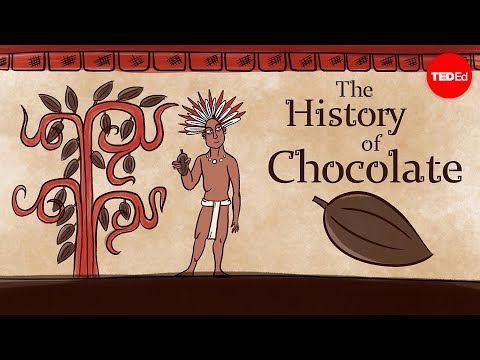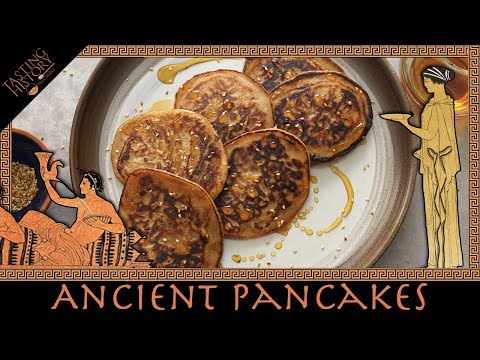10 Yogurt Is Not Greek
How often do you go to the supermarket to pick up a delicious container of Greek-style yogurt? My guess would be pretty often. Contrary to what the name suggests, the product is not actually Greek. Its origins can be traced back to Mesopotamia, dating around 5000 BC. The fermented dairy product remained popular in the Middle East and the Balkans throughout the centuries. However, it wasn’t until the early 20th century that a Bulgarian medical student, Stamen Grigorov, isolated the bacteria that causes the fermentation process of the milk that gives yogurt its distinctive tart taste. Honoring his roots, the bacteria was named Lactobacillus bulgarius. The name Greek yogurt is a result of a marketing campaign in the States—after which it somehow just stuck around.[1]
9 Coffee Is Not Brazilian
Studies show that, worldwide, over 1 billion people drink coffee daily. Even in the UK, the land of stalwart tea drinkers, industry reports reveal that coffee shops sell approximately 98 million cups of coffee per day. Even though a lot of commercials put emphasis on the aroma and taste of Brazilian coffee, the beverage doesn’t originate from there. This ad campaign is a consequence of Brazil being the biggest coffee producer in the world. Watch this video on YouTube The effects of consuming the plant were first discovered in Ethiopia. The tale goes that an abbot noticed his goats feasting on the fruit of the coffee plants and then displaying spikes in energy. After reporting back to the other monks, they all decided to try the fruits themselves. Word traveled globally, and the first coffee culture started in Arabia, slowly spreading worldwide and becoming the sensation it is now.[2]
8 Croissants Are Not French
When someone says “croissant,” the image that immediately comes to mind is France—the land of pastry. But the truth is that croissants originated from Vienna and were initially known as kipfel, a word that translates to crescent from German. The kipfel is first mentioned in a 13th-century poem. The text suggests that the treat was served to King Leopold for Christmas. However, this is not the most popular origin story of the famous moon-shaped pastry. One of the famous Austrian legends reveals that it came about as a celebratory dish for the Austrian victory over the Ottoman Empire in 1683. It was filled with almonds and butter, and the half-moon shape was meant to mimic the crescent in the Turkish flag. However, it’s worth noting that the French added the signature puff pastry and elevated the dish to what we know it now.[3]
7 Chocolate Is Not Swiss
As we probably all know, chocolate is made from cocoa beans that grow on cocoa trees. Watch this video on YouTube The first people to harvest the fruit of the cocoa tree are believed to be the Olmec tribes from the southern parts of Mexico. However, the Mayans were the first to use chocolate in a similar way to us today. They made an indulgent chocolate drink and added chilis and sometimes cornflour to thicken or honey to sweeten. The drink is believed to have been consumed daily and enjoyed both for its luscious taste and its caffeine kick. Later on, the Spanish were the ones who brought chocolate to Europe. The craze quickly spread around the continent. Over time, more usages of the product were invented and led to the myriad of drinks and desserts that we know and love today. Another fun fact about chocolate is that the cocoa tree is officially called Theobroma cacao and means “food of the Gods” in Greek. Well, I believe that![4]
6 Pancakes Are Not French or American
The word “pancakes” conjures an array of powerful metal images. There are the thick fluffy American pancakes one enjoys with maple syrup and bacon, or alternatively, the deliciously thin large French crepes. In England, people even have a holiday devoted to the beloved food item—Pancake Day, officially called Shrove Tuesday, which occurs in February. (That’s Fat Tuesday or Mardi Gras if you didn’t know.) Watch this video on YouTube Funnily, pancakes don’t originate from any of the places above. The first recorded mention of pancakes is in the writing of a Greek poet, dating back to 600 BC. However, historians believe that they were around way earlier than that. There are theories that pancakes date back to the Stone Age! Scientists also found pancakes in the stomach of Otzi the Iceman, the famed glacial-frozen mummy from the Copper Age.[5]
5 Apple Pie Is Not American
Brace yourselves—this is a big one! One of the most popular signature American dishes is actually… English! The dish originated in England, but the recipe is believed to be influenced by French, Dutch, and Ottoman cuisines. One of the first written recipes can be found in the Forme of Curry cookbook by Samuel Pegge. The text dates back to the 14th century. The dish made its way to the States. It appeared in the first American cookbook, American Cookery by Amelia Simmons, published in 1796. Eventually, the phrase “apple pie” became iconic in America. We can find references in various songs, books, and articles in the last three centuries, describing the love of the American nation for the fruit dessert.[6]
4 The Cyrillic Alphabet Is Not Russian
The Cyrillic alphabet is largely associated with Russian culture. This is unsurprising since the Soviet Union took up most of Eastern Europe, and many of the modern-day countries in the region speak languages very closely related to Russian and use the same, or at least a very similar, alphabet. However, the inventors of the script are two brothers—Cyril and Methodius, who were born in the First Bulgarian Empire. Watch this video on YouTube The script was developed in the prominent Preslav Literary School, where both scholars worked. This was actually the first literary school, established around 885 in Pliska by Boris I. In 893, it was moved to the capital of the Empire, Preslav, by Boris’s son, Simeon the Great. The script—likely from the brothers’ earlier Glagolitic script—was popularized by the students and followers of Cyril and Methodius. To this day, Bulgarians celebrate the Slavic script, Bulgarian writing, literature, and culture on May 24. The day is a national holiday marked by various festivities and parades around the country.[7]
3 Pasta Is Not Italian
Pasta has almost become synonymous with Italian food. However, the product does not actually originate there. One theory suggests that Marco Polo brought an early version of pasta to Italy from China. However, reports reveal that the product Marco Polo brought is not exactly pasta; it’s a different Chinese dish. It seems that pasta was introduced to Italy by the Arabs. There is a written reference that pasta was produced and dried in the area around Libya around the 5th century. So it seems we can thank the Middle East for one of our most beloved dishes today![8]
2 Fortune Cookies Are Not Chinese
I never before questioned where fortune cookies came from. We get them as a complementary dessert in Chinese restaurants, and they appear in supermarket displays as part of the Chinese New Year offerings. But the little folded cookies are actually Japanese! Watch this video on YouTube A folklore and history graduate from Kanagawa University was determined to uncover the origin of the beloved snack after she had it in a New York restaurant in 1980. It wasn’t until the 1990s that she managed to locate a family-run bakery outside Kyoto that sold a snack that shared an uncanny resemblance to the fortune cookie. Nowadays, one can find photos of folded cookies displayed on the windows of confectionary shops near Kyoto. The pictures date back to 1870. The snack was called “tsujiura senbei” or “a fortune cracker” and was brought to the States by Japanese immigrants in the early 19th century. However, it seemed that rather than dough with vanilla flavoring, the original Japanese fortune cookie was seasoned with black sesame and miso. The signature shape remained the same, though, and the fortune message inside was also present.[9]
1 Bagpipes Are Not Scottish
The Scottish national instrument finds its roots back to Ancient Egypt. The first versions of the bagpipe were quite similar to what we know today. However, it seemed that the instrument was a bit more… disturbing. The bag was predominantly made of dog rather than sheep skin, and the tubes were made of bone rather than wood. Records of the use of the instrument in Egypt date back to 400 BC by the pipers of Thebes. Later on, the bagpipes were popular in Ancient Rome, which is probably how they made their way to Europe. The Scottish developed the instrument and made it what we know today. Extra fun fact: the bagpipe is the national instrument of another European country, too—Bulgaria. It is the main component of traditional folk music.[10]
























